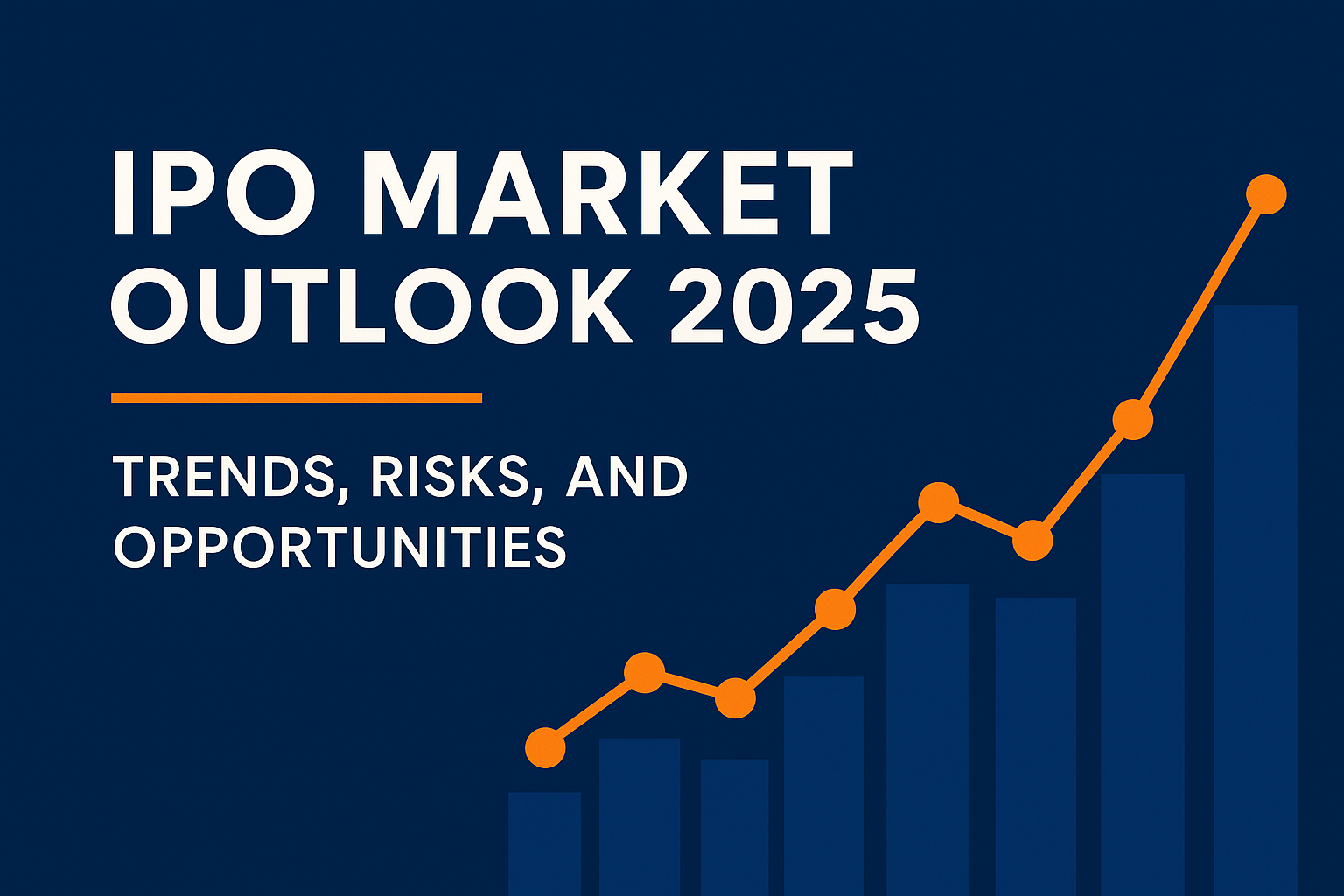
IPO Market Outlook 2025: Key Trends, Emerging Risks, and Investment Opportunities
IPO Market Outlook 2025: Key Trends, Emerging Risks, and Investment Opportunities
As we step into the second half of the decade, the IPO (Initial Public Offering) market in 2025 is expected to reflect the rapid transformation of global financial landscapes. From technological disruption and tightening regulations to shifting investor sentiments and rising interest rates, IPOs will navigate a complex terrain.
This comprehensive outlook explores the major trends, associated risks, and lucrative opportunities that investors, founders, and analysts should watch closely in 2025.
📈 Current State of the IPO Market
Following a volatile few years impacted by macroeconomic instability, rising inflation, and geopolitical uncertainty, 2024 saw a cautious rebound in IPO activity. Companies returned to the public markets, but with revised expectations, tighter valuations, and more rigorous investor scrutiny.
According to PwC, global IPO volumes grew by 18% year-over-year in 2024, signaling a return of confidence — albeit cautiously.
🔍 Top Trends Shaping the IPO Market in 2025
1. Tech IPOs Regain Momentum
After a slowdown in 2022–2023, the tech sector is expected to dominate IPO pipelines again in 2025. AI, cybersecurity, fintech, and green tech companies are leading the pack.
Notable shifts include:
Focus on profitability over growth-at-any-cost
Increased disclosure requirements
Interest in dual-track IPOs (IPO + SPAC or acquisition paths)
2. Rise of Climate-Tech and ESG-Driven IPOs
Sustainable investing continues to influence IPO strategies. Companies with clear Environmental, Social, and Governance (ESG) missions are receiving premium valuations.
ESG IPO Example Sectors:
Renewable energy startups
EV infrastructure
Sustainable packaging companies
According to McKinsey, over 65% of investors now consider ESG as a key investment criterion.
3. Private Equity and Late-Stage Venture-Backed Exits
Private equity (PE) and VC-backed firms are increasingly bringing mature, cash-flow-positive companies to the public market. These firms aim to:
Capitalize on high valuations
Unlock liquidity amid extended private funding cycles
Avoid down rounds in private markets
4. Globalization of IPO Listings
More firms are considering cross-border IPOs to access deeper pools of capital. For example, Indian and Southeast Asian startups are targeting U.S. and London markets.
⚠️ Key Risks in the IPO Landscape for 2025
While 2025 presents several tailwinds, IPO investors and issuers must navigate some persistent risks.
1. Macroeconomic Uncertainty
High interest rates can dampen investor risk appetite
Inflation or a delayed economic recovery may stall listings
Policy shifts in the U.S., China, and EU could impact regulatory frameworks
2. Regulatory Scrutiny and Compliance Hurdles
Governments and financial bodies are tightening compliance frameworks. IPO-bound companies must now provide:
Enhanced risk disclosures
Transparent governance structures
Clear ESG metrics and impact statements
3. IPO Performance Volatility
Past data from Renaissance Capital shows that more than 60% of IPOs underperform market indexes within 12 months. Key causes include:
Overvaluation
Limited float
Poor post-IPO communication
🌟 Opportunities in the IPO Market
Despite the risks, several strategic opportunities await those willing to navigate the IPO terrain smartly.
1. Investing in AI and Deep Tech IPOs
AI startups are now product-ready and revenue-generating. Companies in:
Machine learning platforms
NLP (Natural Language Processing)
Edge computing
are expected to go public in 2025.
2. The Return of SPACs – Cautiously
While SPACs (Special Purpose Acquisition Companies) lost favor due to regulatory issues and poor performance, a more regulated and selective SPAC environment is emerging. High-quality sponsors are returning, targeting niche sectors like healthtech and quantum computing.
3. Retail Investor Participation
Retail platforms are now partnering with IPO issuers to democratize access. Apps like Robinhood and SoFi offer early-stage IPO access for retail traders, creating a more diversified investor base.
📊 Comparison Table: Traditional IPOs vs. Emerging Alternatives in 2025
| Feature | Traditional IPO | Direct Listing | SPAC |
|---|---|---|---|
| Underwriting | Investment banks | None | SPAC sponsor |
| Cost | High | Lower | Medium |
| Speed to Market | Moderate | Faster | Fast |
| Regulatory Oversight | High | Medium | Increasingly high |
| Best for | Large firms with strong brand | Mature private companies | Niche or early-stage companies |
🧭 How to Prepare for IPO Investment in 2025
If you're considering investing in upcoming IPOs in 2025, here are some practical steps:
Research the S-1 filing: Understand business models, risks, and revenue trajectories
Evaluate lock-up periods: Avoid early volatility caused by insider share sales
Watch valuation multiples: Avoid overpriced offerings relative to peers
Diversify: Avoid overexposure to one sector or IPO type
🔚 Final Thoughts
The IPO market in 2025 is poised for a cautious yet optimistic evolution. Backed by strong fundamentals, improved governance, and investor appetite in key sectors like AI, ESG, and fintech, public listings will offer both growth potential and strategic challenges.
Success will depend on selective participation, due diligence, and long-term thinking. Whether you're an issuer planning a listing or an investor exploring new opportunities, staying informed will be your most valuable asset.
📌 Sources:
PwC Global IPO Watch
McKinsey & Company – ESG Investing
 (1200 x 630 px) (1200 x 630 px) (1200 x 630 px) (1200 x 630 px).jpg)
 (1200 x 630 px) (1200 x 630 px) (1200 x 630 px) (1200 x 630 px).png)
 (1200 x 630 px) (1200 x 630 px) (1200 x 630 px).jpg)